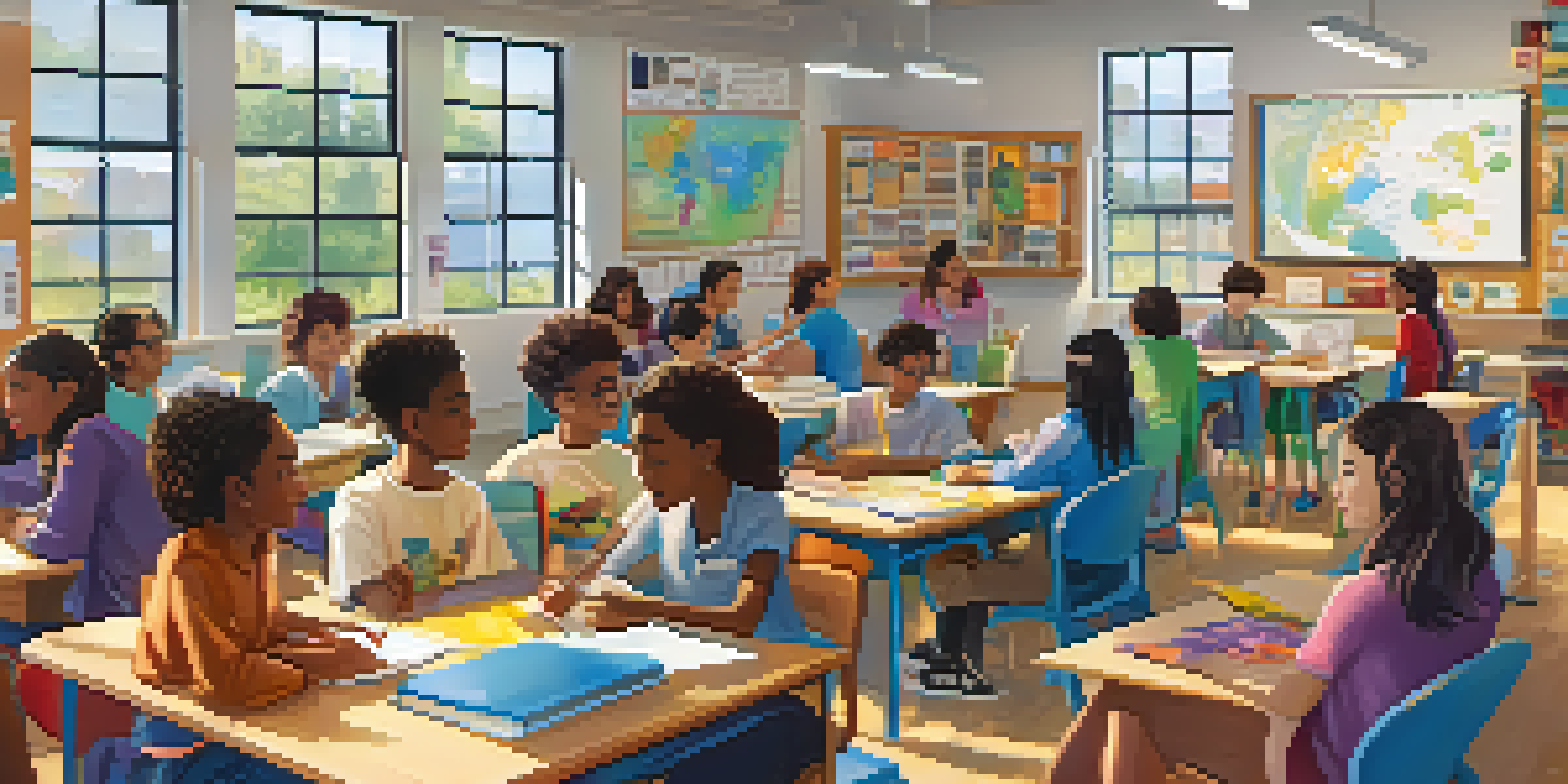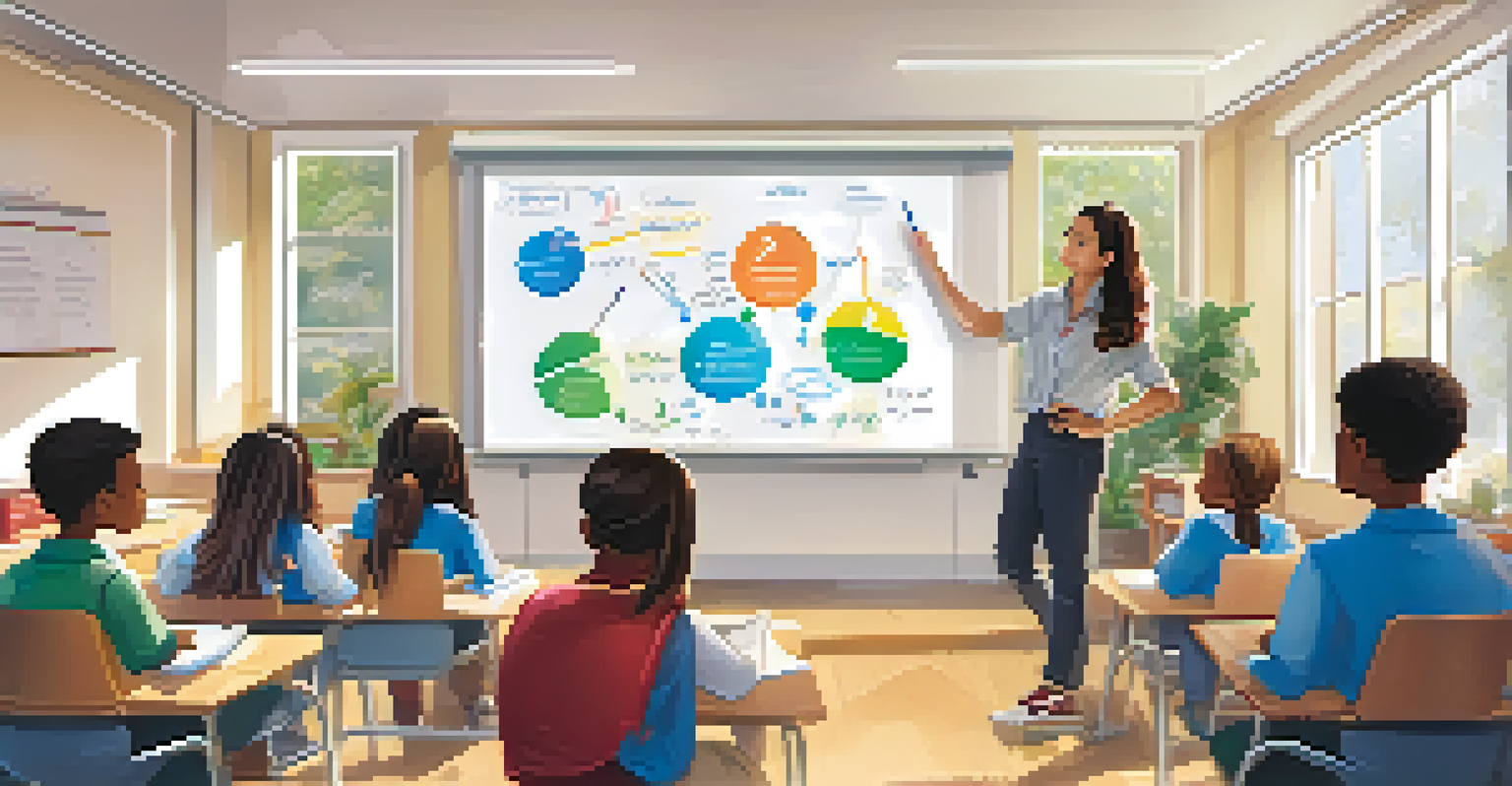Flipped Classroom: Fostering a Growth Mindset in Students

Understanding the Flipped Classroom Approach
The flipped classroom model fundamentally changes how students engage with learning. Instead of traditional lectures, students access instructional content at home, often through videos or reading materials. This allows classroom time to be devoted to interactive activities, discussions, and collaborative projects.
Intelligence is not a fixed quantity. It is not something you are born with, but something you can develop.
By flipping the classroom, educators can create a more personalized learning environment. Students can learn at their own pace, revisiting materials as needed, which fosters a sense of autonomy and responsibility. This approach not only enhances understanding but also encourages students to take ownership of their learning journey.
Moreover, the flipped classroom model aligns perfectly with the principles of a growth mindset. When students are empowered to learn in ways that suit them best, they are more likely to embrace challenges and view setbacks as opportunities for growth.
What is a Growth Mindset?
A growth mindset, a term coined by psychologist Carol Dweck, is the belief that abilities and intelligence can be developed through dedication and hard work. This perspective contrasts with a fixed mindset, where individuals believe their talents are static and unchangeable. Understanding this concept is crucial for fostering resilience and a love for learning in students.

In a classroom setting, students with a growth mindset are more likely to tackle challenging tasks head-on. They view mistakes as part of the learning process rather than failures. This shift in perspective encourages them to persist in the face of difficulties, ultimately leading to deeper understanding and skill acquisition.
Flipped Classroom Enhances Learning
The flipped classroom model allows students to learn at their own pace while engaging in interactive activities during class time.
By integrating a growth mindset into educational practices, teachers can help students cultivate a lifelong love for learning. When students believe they can improve and grow, they become more engaged and motivated, setting the stage for academic success.
The Role of Self-Paced Learning
Self-paced learning is a cornerstone of the flipped classroom model. It allows students to engage with content on their terms, which can significantly enhance their motivation and confidence. When students have the freedom to control their learning pace, they are more likely to feel empowered and invested.
Mistakes should be examined, learned from, and discarded; not dwelled upon and stored.
This autonomy plays a critical role in developing a growth mindset. Students who feel in control of their learning are more inclined to take risks and embrace challenges. They learn to see effort as a pathway to mastery, reinforcing the idea that they can improve over time.
In addition, self-paced learning accommodates diverse learning styles. Whether a student needs more time to grasp a concept or wants to explore a topic in greater depth, this approach makes room for individual needs, promoting a more inclusive and supportive learning environment.
Encouraging Collaboration and Peer Learning
Collaboration is vital in the flipped classroom, as it creates opportunities for peer learning and support. When students come together to discuss concepts and solve problems, they can share different perspectives and strategies. This interaction not only enhances understanding but also builds valuable social skills.
In a collaborative environment, students are more likely to take risks and ask questions, knowing they have a supportive network. This camaraderie reinforces a growth mindset, as students see that everyone is learning together and that mistakes are merely stepping stones on the path to success.
Growth Mindset Promotes Resilience
A growth mindset encourages students to embrace challenges and view mistakes as opportunities for growth, fostering a love for learning.
Furthermore, peer feedback encourages students to reflect on their learning processes. When they receive constructive criticism from classmates, it fosters a culture of growth and improvement, empowering them to take charge of their educational journey.
Creating a Safe Learning Environment
A safe learning environment is crucial for fostering a growth mindset. In a flipped classroom, teachers can create this atmosphere by encouraging open communication and celebrating effort over grades. When students feel safe to express their thoughts and ideas, they are more likely to engage actively in their learning.
Additionally, establishing ground rules for respect and support among classmates is essential. When students know that their contributions are valued, they are more willing to take risks and share their challenges. This sense of belonging can significantly boost their confidence and resilience.
Moreover, a supportive environment reduces the fear of failure. When students understand that mistakes are an integral part of the learning process, they are more likely to embrace challenges rather than shy away from them, reinforcing the principles of a growth mindset.
Incorporating Reflection into Learning
Reflection is a powerful tool in the learning process, and it plays a crucial role in the flipped classroom model. By encouraging students to reflect on their learning experiences, educators help them develop critical thinking skills and self-awareness. This practice also reinforces the importance of perseverance and growth.
Through reflection, students can identify their strengths and areas for improvement. They learn to appreciate their progress and recognize that learning is a continuous journey. This understanding nurtures a growth mindset, as students become more attuned to their development over time.
Collaboration Builds Confidence
Collaboration among students enhances understanding and social skills, creating a supportive environment where risks can be taken without fear of failure.
Incorporating reflection can take various forms, such as journals, group discussions, or digital portfolios. These activities provide students with opportunities to articulate their thoughts and feelings about their learning, solidifying their commitment to growth and improvement.
Conclusion: Embracing Change for Lifelong Learning
The flipped classroom model offers a transformative approach to education, fostering a growth mindset in students. By prioritizing self-paced learning, collaboration, and reflection, educators can create an environment that supports resilience and a love for learning. This shift not only benefits students academically but also prepares them for future challenges.
Embracing the flipped classroom approach requires a willingness to adapt and innovate. Teachers must be open to experimenting with new strategies and technologies, always keeping the focus on student engagement and empowerment. This commitment to change is essential for cultivating a growth mindset.

Ultimately, by fostering a growth mindset through the flipped classroom model, educators equip students with the skills and mindset needed for lifelong learning. In a world that is constantly evolving, the ability to learn and adapt is invaluable, making this educational approach more relevant than ever.